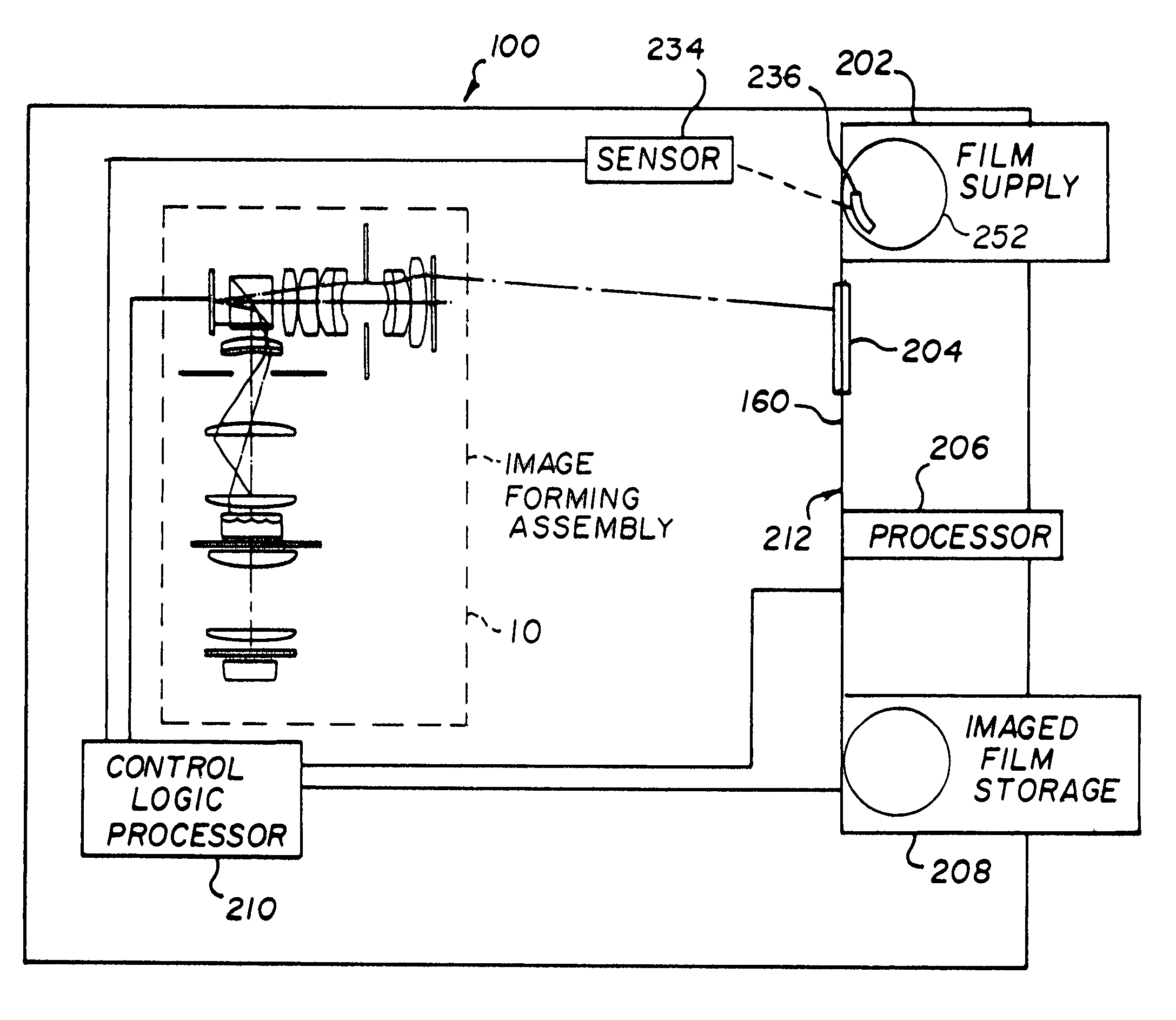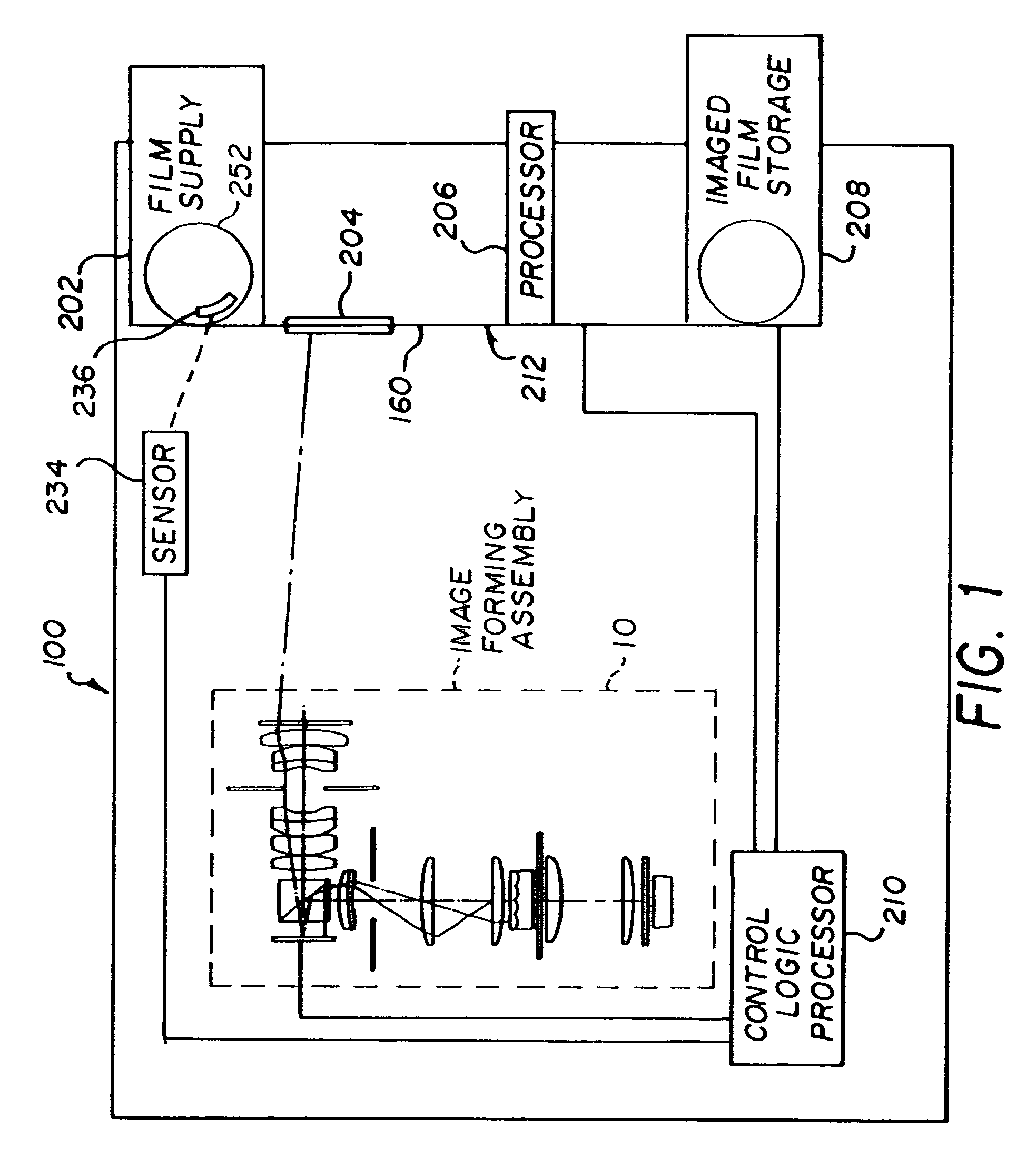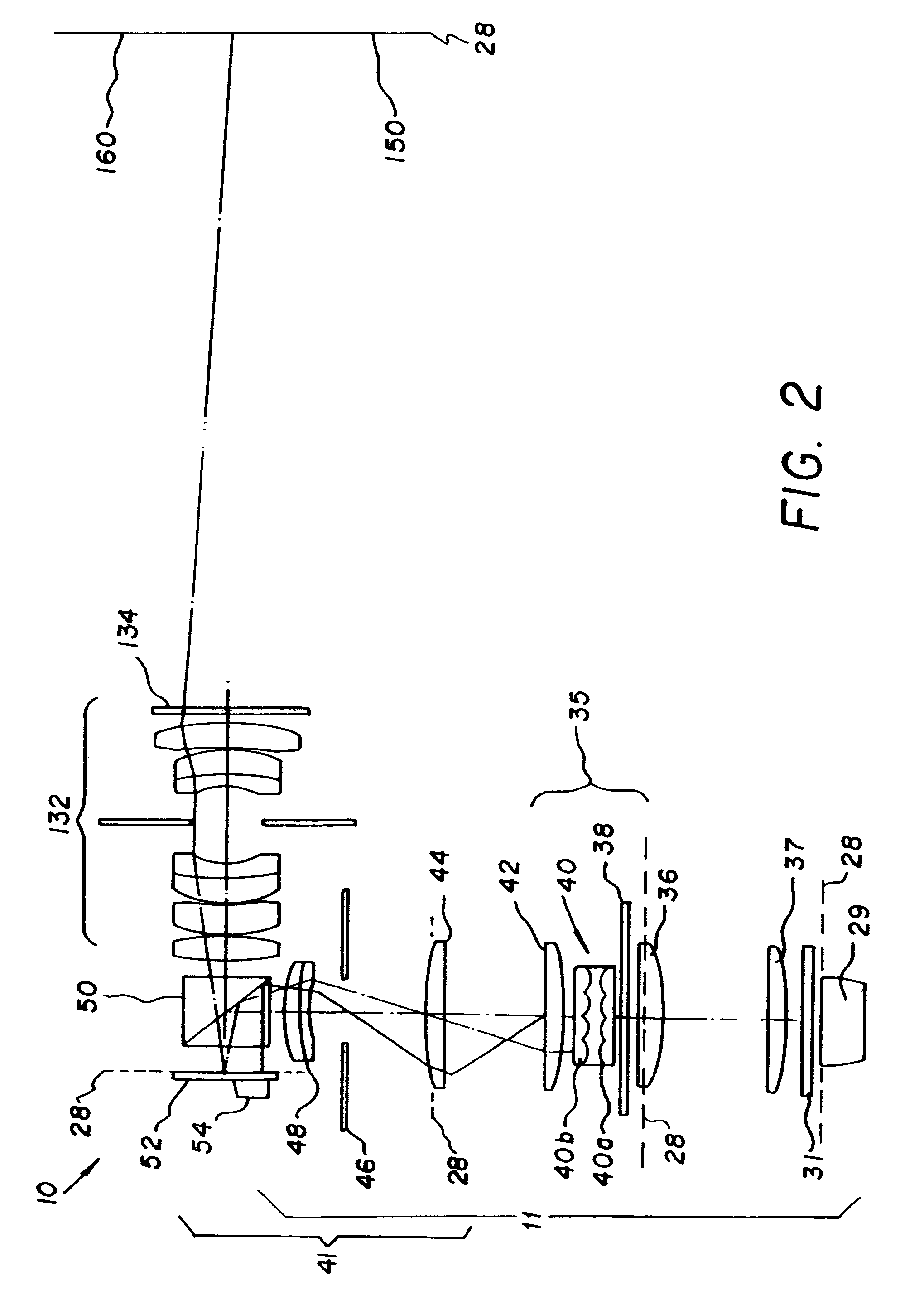Method and apparatus for printing images from digital image data
a digital image and printing method technology, applied in printing, optics, instruments, etc., can solve the problems of differences in resolution requirements, inability to meet human eye tolerance, and considerable complexity of optical systems for providing uniform exposure energy for printing, so as to achieve flexibility, provide potential productivity gains, and increase the complexity or cost of optical systems
- Summary
- Abstract
- Description
- Claims
- Application Information
AI Technical Summary
Benefits of technology
Problems solved by technology
Method used
Image
Examples
Embodiment Construction
[0077]The present description is directed in particular to elements forming part of, or cooperating more directly with, apparatus in accordance with the invention. It is to be understood that elements not specifically shown or described may take various forms well known to those skilled in the art.
[0078]It must be noted that the following description focuses primarily on COM applications. However, the method and design disclosed herein can be employed with other types of digital printers, including polychromatic applications as well as infrared printers. In general, the design disclosed herein is well suited for printing two dimensional swaths.
[0079]Referring now to the drawings, wherein like reference numerals represent identical or corresponding parts throughout the several views, FIG. 1 illustrates an archival printer according to the present invention, such as a COM printer, referred to in general by numeral 100. Printer 100 comprises an image forming assembly 10 and a media han...
PUM
 Login to View More
Login to View More Abstract
Description
Claims
Application Information
 Login to View More
Login to View More - R&D
- Intellectual Property
- Life Sciences
- Materials
- Tech Scout
- Unparalleled Data Quality
- Higher Quality Content
- 60% Fewer Hallucinations
Browse by: Latest US Patents, China's latest patents, Technical Efficacy Thesaurus, Application Domain, Technology Topic, Popular Technical Reports.
© 2025 PatSnap. All rights reserved.Legal|Privacy policy|Modern Slavery Act Transparency Statement|Sitemap|About US| Contact US: help@patsnap.com



